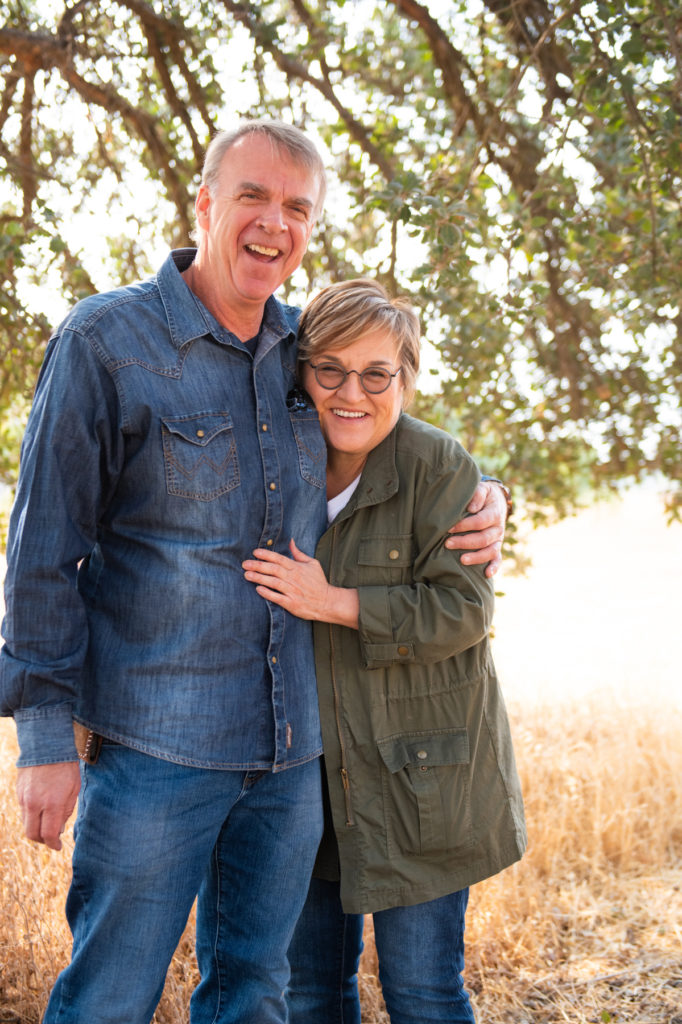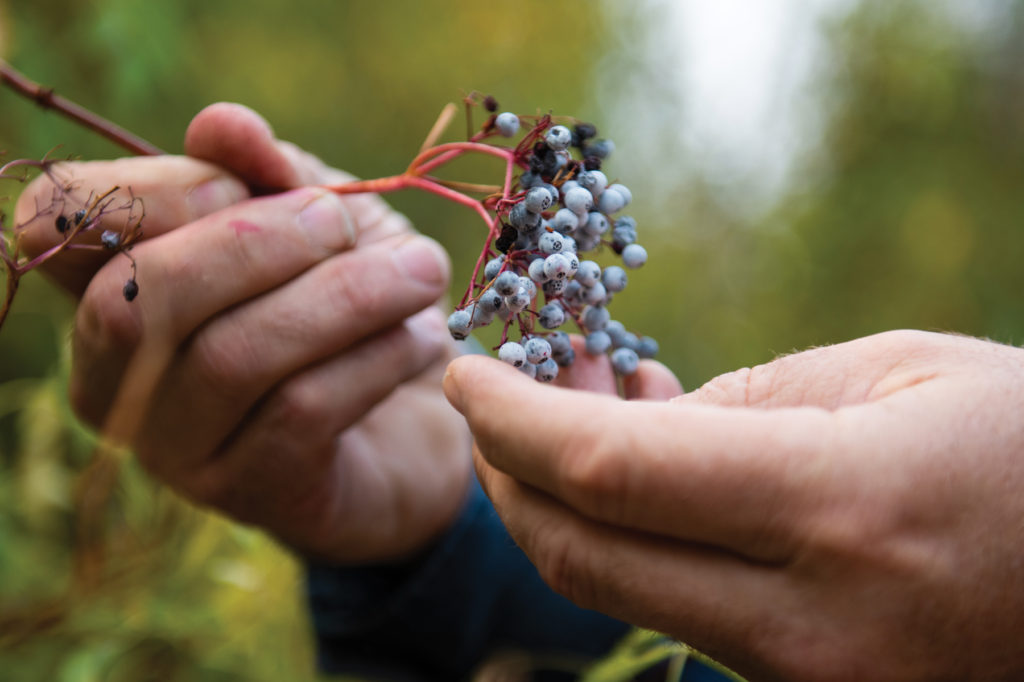
Wild Spirits
Photography by Brittany App
On an early October morning, in a vehicle headed north from Atascadero, the Co-owners of Central Coast Distillery drive to various destinations to forage for wild plants. Eric and Anna Olson, who are married with adult children, pour their hearts and souls into their business of handcrafting single batch spirits.
The seasonal menu at the distillery’s bar features their Forager line of spirits, which is made from plants. Forager batches are made in either a 50-gallon stainless steel or a 100-gallon Kentucky copper still and utilize wild, local ingredients in creating the mash and ferment. Whether it’s raw honey from beehives between Ojai and Santa Cruz used to produce “Forager’s Vodka distilled from raw honey’’ or agave from Paso Robles to create their “Agave Spirit in a reposado style,” nature is a key component of their offerings.

For an up-close look at an agave plant, Eric heads to the Mission San Miguel Arcángel, where one stands guard out front. Foraging for agave is no easy feat. Agaves have natural protective mechanisms, a large pineapple-shaped base (the pina) and tough, poisonous, prickled leaves up to 6 feet long. In Mexico, harvesting agaves is a centuries old practice, carried out by experts called jimadores, using a special tool, a sharp hoe called the coa. “The Aztecs wanted nothing to do with the agave until God struck down a lightning bolt and the pina caught on fire, and what was left was tequila, more or less is how the story goes,” says Eric.
The giant leaves can be used for cooking, the needles employed in sewing and tattoos, and the plant itself makes a protective barrier for property and fire break lines. Anna says that when people call to have an agave removed from their property, she and her husband look for ways to reuse the plant byproducts. Not to mention, propagating agave pups can lead to a lifelong hobby. “We hopefully have some form of sustainability in everything we do,” Anna explains.

Throughout San Miguel and along Highway 46, the Olsons stop to smell and touch the native plants, sharing insights about the wild world around us and its edible plant inhabitants. Eric shares how he makes yellow mustard flower pesto and acorn elderberry cobbler. He says foraging is never 100 percent predictable due to variables like elevation, microclimates, fires, drought and parasites, but that’s one of the reasons behind Eric’s enjoyment. “It’s kind of fun. You never know what you’re going to see, if it’s in season or not in season, different animals that travel through,” Eric elaborates. “Nature has a way of presenting things in the moment, and you say, ‘Oh, hey, isn’t that cool.’”

A large cactus at the side of the road practically screams out for attention. With a knife Eric removes the fruits, or tunas, from a prickly pear. To cut them open, he places them on a dead cactus paddle, the nopal, as if it were a cutting board then slices them. In a savage yet beautiful way, the fuchsia juice from the tunas stains the lips and fingers as it’s devoured. Cactus is high in vitamin C and can be used in salsas, margaritas, lemonades and grilling.
This type of day-long adventure is exactly the kind of experience that motivates and inspires Eric to develop signature cocktails, which he creates using house-made elixirs, Forager spirits and locally sourced garnishes. If a cocktail includes fruits, herbs or flowers, Eric muddles, mixes and chops plants he picked by hand.

When Central Coast Distillery began in 2017, it immediately impacted the world of craft spirits. “The first competition we ever went to, we won the whole thing out of 300 distilleries,” Eric recalls.
Today, the couple introduces others to foraging through a private tour they call Wild Ride. “Sometimes we take a group to the beach and forage seaweed for salad and tuna,” he says. “Sometimes people are more into the spiritual side or medicinal side.” The couple partners with local wineries and business owners to create one-of-a-kind events, exploring the local agave field, foraging ranches, vineyards and abalone farms. Tours conclude with consuming the day’s glean, food and drinks.

And because not all wild plants are safe, the Wild Ride includes a lesson on identifying basic edible herbs and vegetation, as well as poisonous or misleading flora, and signs and indicators of natural springs. Harkening back to Eric’s ancestral ties to medicine work in the late 1800s, he’s sure to share with those on the tour the medicinal elements and health benefits derived from natural herbs, weeds and shrubs.
Once the couple unloads their hull from the day’s foraging, they will roast the agave over native almond wood to create an ‘Agave Spirit in a Reposado style’ using traditional Mexican distilling methods that honor Anna’s Mexican heritage. Because the Olsons’ spirits rely on the bounty provided by Mother Nature, the entrepreneurs do their best to produce bottles that pay tribute to the spirit of California with each pour.


